Blackspot Tuskfish
Choerodon schoenleinii
A large, deep-bodied Wrasse (Labridae), blue-green to yellowish overall with iridescent blue markings on the sides, head, and most fins. The black spot at the base of the dorsal fin towards the rear of the body is distinctive, with juveniles possessing an additional whitish blotch immediately following the black spot.
Morphology
The rounded head profile and prominent canine teeth are distinctive features of tuskfishes (genus Choerodon). This is the largest species of tuskfish growing up to 100 cm. This species is also commonly known as Bluebone in reference to the aqua blue colour of the bones and fin spines.
Evolution
There are 24 species currently recognised in the genus Choerodon, which is a member of the Labridae, a highly diverse family containing over 500 species worldwide. Choerodon is well represented in Western Australian waters.
Behaviour
A solitary species with an imposing set of teeth adapted for feeding on hard-shelled crustaceans, molluscs and sea urchins.
Method of reproduction
Sexual
Habitat
Marine
Inhabits sandy or weedy areas in the vicinity of coral reefs between 10-60 m depth.
Distribution
Mainly western Pacific, from the Ryukyu Islands (Japan) to northern Australia, but has also been reported from Mauritius.
Life Cycle
Oviparous. Like most labrids, it is a protogynous hermaphrodite. All juveniles are females (initial phase) and only a certain percentage of individuals change sex to become males (or terminal phase) during the lifespan.
| Kingdom: | Animalia |
|---|---|
| Phylum: | Chordata |
| Class: | Actinopterygii |
| Order: | Perciformes |
| Family: | Labridae |
| Genus: | Choerodon |
| Species: | schoenleinii |
| Name Published Year: | 1839 |
|---|---|
| Scientific Name Authorship: | Valenciennes |
| Conservation Assessment: | Near Threatened |
Cite this page
Western Australian Museum Collections https://museum.wa.gov.au/online-collections/names/choerodon-schoenleinii
Accessed 23 Dec 2025
Rights
We support the open release of data and information about our collections.
Text content on this page is licensed under a Creative Commons Attribution 4.0 International License.
Image content on this page is copyright WA Museum.


